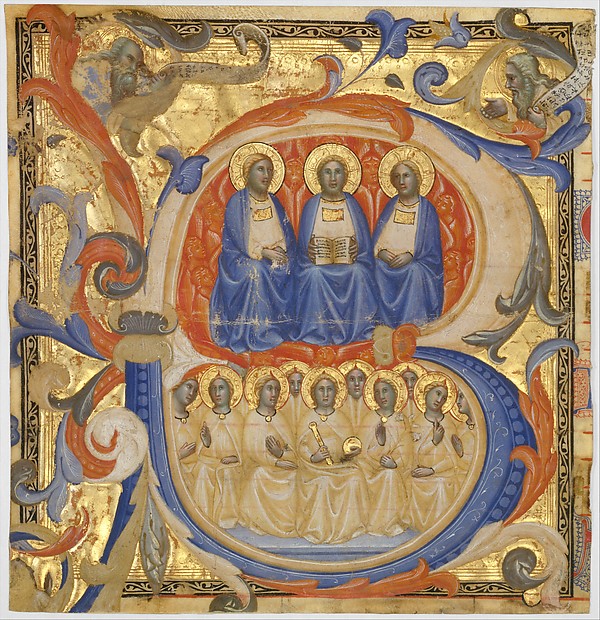

|
|
|
|
|
|
Hallo again to all.  For much of our childhood, our notion of God the Father was that of an old white-haired man sitting in a chair, as dramatically illustrated in our children's bible. Bearded, with a wild mane and watchful eye, he was a strong, powerful, masculine sort of fellow, reminiscent of Zeus or Charlton Heston. God the Son was no stretch either, as he is frequently depicted with close artistic similarity in art, icons, and the reredos behind our childhood altar—slender and brunette with long locks and flowing robes. Also bearded. Depictions of the Holy Spirit were a bit more of a stretch—doves, flames, or the occasional kite. A bit unspecific, but generally accepted. All three consistent, and as combined, decidedly masculine. For much of our childhood, our notion of God the Father was that of an old white-haired man sitting in a chair, as dramatically illustrated in our children's bible. Bearded, with a wild mane and watchful eye, he was a strong, powerful, masculine sort of fellow, reminiscent of Zeus or Charlton Heston. God the Son was no stretch either, as he is frequently depicted with close artistic similarity in art, icons, and the reredos behind our childhood altar—slender and brunette with long locks and flowing robes. Also bearded. Depictions of the Holy Spirit were a bit more of a stretch—doves, flames, or the occasional kite. A bit unspecific, but generally accepted. All three consistent, and as combined, decidedly masculine.
It crept up on us for the first time several years ago during Holy Communion. 'Blessed is the one who cometh in the name of the Lord' recited the woman in the pew next to us. It was a bit of a jolt from what we expected to hear, and what was written in the prayer book. We decided to think little of it. But it stayed with us. The one. Interesting, 'Perhaps it is of circumstance that Christ was male', we pondered, but no bother. We admit to shuddering the first time we heard the Trinity referred to as 'Creator, Redeemer, Sanctifier', rather than 'Father, Son and Holy Spirit', and being perplexed by—although ultimately (reluctantly) accepting of—the explanation that that is a description of position or role rather than name. The Holy Spirit, it was explained to our rather stodgy selves, is neuter at best. Pneuma (breath/spirit) in Greek is grammatically neuter and ruach (spirit) in Hebrew is feminine. Even more so, Divine Wisdom, Sophia is inarguably feminine, giving more basis for the acceptance of God—or at least the Holy Spirit, as 'She'. There is, of course, no lack of feminine imagery in the bible. Even the Gospel of Luke compares God to a hen gathering her brood under her wings. And while we do believe that God transcends gender that still did not prevent us from being stopped in our tracks when 'She' was proclaimed from the pulpit. Throughout the church’s history there has been a clear desire for a holy feminine. This yearning has often gone in odd directions. The Cult of the Virgin Mary has been common throughout history, and there is a concept among some Roman Catholics as Mary as Co-Redemptrix.* While fascinating, these notions seem to stray far from our notions of God and the Trinity, and can seem a bit dubious. Rather, more recently we have found an increase in the usage of a language of inclusivity in theological discourse and liturgical forms. Numerous books and much scholarship has been done on this point, and the Inclusive Bible, which calls itself 'the first Egalitarian translation' boasts that 'the translators have rethought what kind of language has built barriers between the text and its readers. Seeking to be faithful to the original languages, they have sought new and non-sexist ways to express the same ancient truths.' Perhaps that is the point, not to fall into the trap of creating a feminine God (or good heavens, a neuter one!), but rather to worship a God larger than our own categorizations. All this so that we create a place of inclusivity big enough for God. He, She, It, or They, every Sunday morning we will continue to praise—er—God’s name. |
This web site is independent. It is not official in any way. Our editorial staff is private and unaffiliated. Please contact editor@anglicansonline.org about information on this page. ©2014 Society of Archbishop Justus. Please address all spam to press@anglicansonline.org |